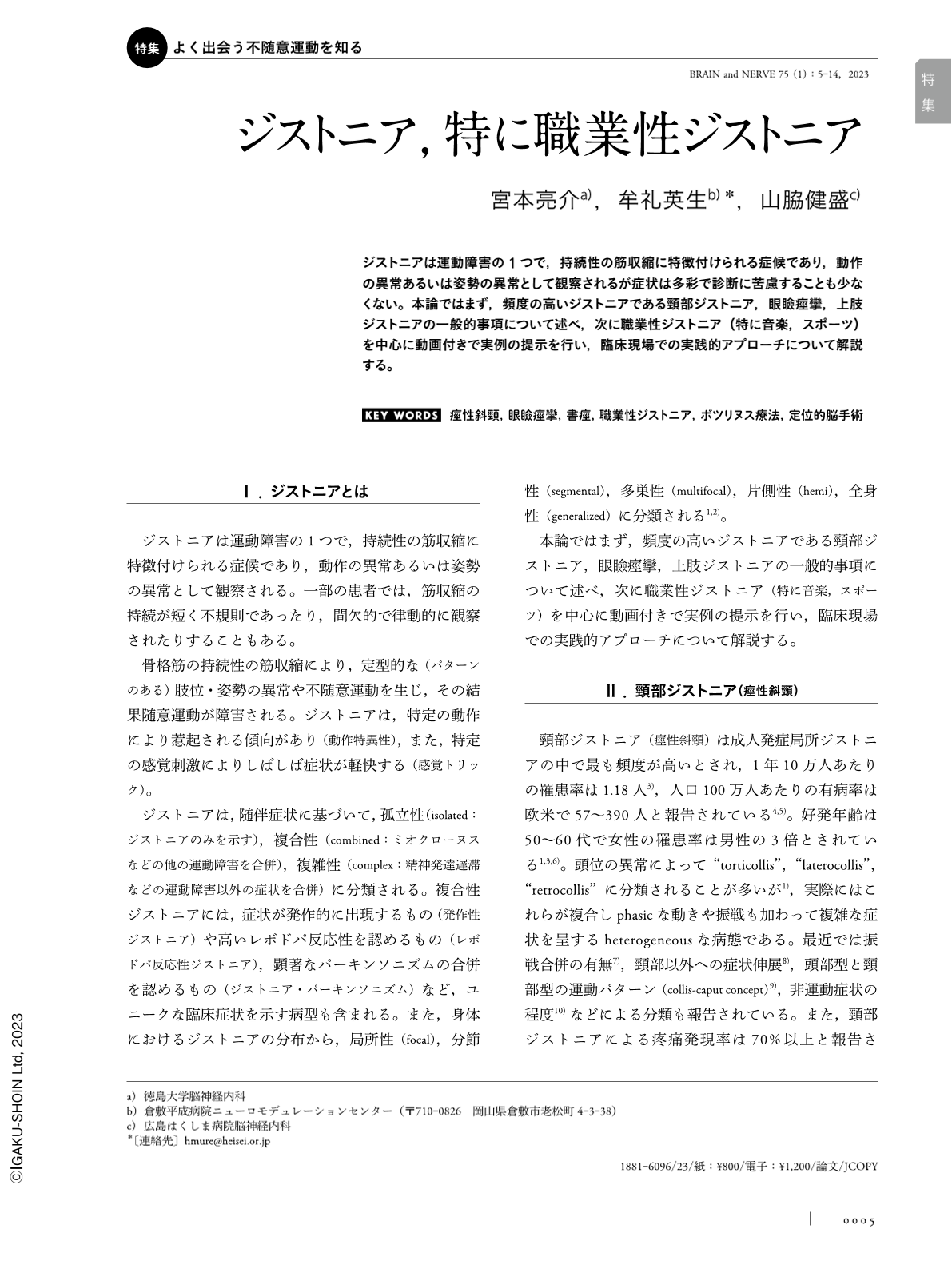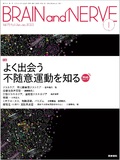Japanese
English
- 有料閲覧
- Abstract 文献概要
- 1ページ目 Look Inside
- 参考文献 Reference
ジストニアは運動障害の1つで,持続性の筋収縮に特徴付けられる症候であり,動作の異常あるいは姿勢の異常として観察されるが症状は多彩で診断に苦慮することも少なくない。本論ではまず,頻度の高いジストニアである頸部ジストニア,眼瞼痙攣,上肢ジストニアの一般的事項について述べ,次に職業性ジストニア(特に音楽,スポーツ)を中心に動画付きで実例の提示を行い,臨床現場での実践的アプローチについて解説する。
*本論文中に掲載されている二次元コード部分をクリックすると,関連する動画を視聴することができます(公開期間:2026年1月31日まで公開)。
Abstract
Dystonia is a movement disorder characterized by sustained muscle contractions that result in abnormal “patterned” movements and/or postural abnormalities. Based on the accompanying symptoms, dystonia can be classified as isolated (i.e., with dystonia only), combined (i.e., with other movement disorders such as myoclonus), or complex (i.e., with symptoms other than movement disorders such as mental retardation). Moreover, dystonia may affect single or multiple parts of the body and accordingly be classified as focal, segmental, multifocal, hemi, or generalized. The most common type of dystonia is isolated focal dystonia, often accompanied with a specific action (task-specific action). The “task-specificity” uniquely illustrates the nature of dystonia, and this phenomenon is most clearly observed in occupation-related dystonias that include musician's and athlete's dystonia. In this article, we first elucidate the general issues of common focal dystonia (cervical dystonia, blepharospasm, and focal hand dystonia) and then present several educational cases of occupational (task-specific) dystonia with some clinical pearls for practical management.

Copyright © 2023, Igaku-Shoin Ltd. All rights reserved.


